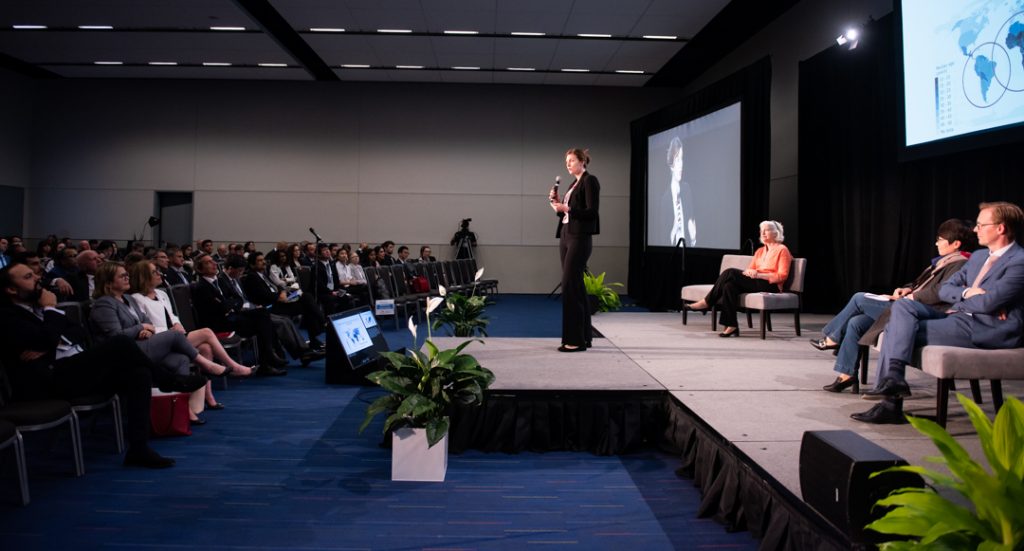
Article by PhD student Luciana Miu.
With the rising urgency of climate change and a sore need for global commitments to sustainable energy, it’s no surprise that intergovernmental partnerships and initiatives are taking centre stage these days. Perhaps the most important example from the energy sector is the Clean Energy Ministerial (CEM), a high-level forum of 25 countries advancing programmes to accelerate clean energy deployment, recently coupled with Mission Innovation (MI), another global initiative which seeks to build public and private investment in clean energy technologies. However, up until the most recent annual CEM/MI meeting, one aspect of these ambitious initiatives remained puzzling.
There was no structured presence of youth at the meetings.
It seems like a no-brainer – major initiatives seeking to advance a clean energy future should have a platform to incorporate the voices of those who will be leading us into that future, beyond 2030. But CEM/MI didn’t. That is, until the Government of Canada decided to fund a youth delegation to take part in the 2019 CEM/MI meeting which they hosted in Vancouver in May. Organised by Student Energy, a global charity working to empower future energy leaders, the youth delegation took part in a parallel program of activities, as well as participating in side events, networking sessions and the (very) occasional ministerial meeting within the CEM/MI conference. Over 70 young energy leaders from 25 countries, including all provinces of Canada, took part this year. I was lucky enough to be one of them, a youth representative of the European Commission delegation in beautiful Vancouver, thrown into a whirlwind of events and meetings united under the slogan of “Accelerating innovation and raising ambitions – approaches to the clean energy transition”.

The three days of the meeting were a blur. From networking receptions with the International Emissions Trading Association, to hearing from pioneers such as Bertrand Piccard, to my own heart-in-throat delivering an Ignite Talk (a type of very fast and dynamic talks designed to galvanize audiences – “enlighten us, but make it quick”), I’m still unpicking the various strands of the 2019 CEM/MI meeting. However, a few things stuck firmly, and lay the groundwork for what I hope will be a continued engagement of world energy leaders with young voices, in an effort to build a proper foundation for our clean energy future.
Firstly, we can’t talk about accelerating innovation without talking about raising ambition. The two shouldn’t happen in parallel, as the “and” in the slogan above would suggest; instead, raising ambition is an important precursor to accelerating ambition. Throughout history, innovation has never happened without vision and ambition. And today, young people are the ones raising those ambitions. They are the ones demanding change, and also the ones who believe that change is possible within the timeframes and on the scale that we need. Throughout the CEM/MI meeting, the youth delegation was pitching, questioning, pressing, suggesting, committing, contributing – generating an undeniable momentum for doing things better, more and now. And that is how innovation happens – when you run out of time, you need to be clever about achieving your goals. But you also need to believe that it’s possible to achieve them. That’s why listening to youth voices will put you ahead of everyone else.
Secondly, youth are a huge untapped resource for accelerating the clean energy transformation. And like any resource, our global youth community needs to be valued properly in order to incentivise developing and harnessing it. However, very often the value that is assigned to youth is centred around making noise, demanding action and pushing for change. That is dangerous, for two reasons: one, it falls short of valuing youth fully, and two, it generates complacency by creating the image that “youth are already invested in clean energy, we don’t need to do anything more”. It’s a bitter feeling that, as a young person, you need to prove yourself to your energy leaders – but even so, without a platform to showcase what youth can do and why they are so valuable, this phenomenal resource will continue to go untapped, and the energy transition will continue to be sluggish, fragile and plagued by short-term thinking.

The second issue of complacency towards youth engagement leads me to my final point. Even in instances where energy leaders are clearly invested in the value of youth, the lack of concrete mechanisms for harnessing youth potential and tracking our progress in doing it is evident. Bold conversations with leaders from the European Commission uncovered a welcoming attitude towards simple, tangible actions to bring youth voices closer to the European clean energy agenda. Like having a youth delegation at the EU Sustainable Energy Week. Or organizing a policy hackathon for young people to get creative with the EU’s energy policies. Offering a platform for youth to speak their mind to energy leaders uncovers a multitude of ways in which young people can be actively and meaningfully involved in the key decision-making processes which will set up our energy future to be innovative, sustainable and just.
Having the chance to attend and speak at the 2019 CEM/MI really opened my eyes to our global wealth of youth ambition and innovative thinking, but also to the possibilities for channelling this ambition and thinking into real solutions that empower youth to drive the sustainable energy transition forward. What remains to be seen is what powerful institutions, public and private alike, will do to channel this power and show youth that they are being listened to and cultivated as the generation that will take our energy transition forward. And in an era of data-driven decision-making, none of this can happen without a system in place to track progress and identify gaps and opportunities. Monitoring and evaluation was never one of the cool kids, but the time has come for it to drive these hopeful, persistent kids into a cooler future for our planet.